#Irish holiday
Explore tagged Tumblr posts
Text

All About Lughnasadh
Lughnasadh, also known as Lughnasa or Lúnasa, is the name given to the Gaelic festival that represents the beginning of the harvest season, which traditionally falls on August 1st in the northern hemisphere. The holiday is about halfway between the summer solstice and autumn equinox, and is one of the 4 Gaelic seasonal festivals. Although it is traditionally Irish, many neopagans celebrate the holiday as well.
Traditionally named after the Irish God Lugh, Lughnasadh has been documented to be celebrated since at least the middle ages and involved great gatherings, ceremonies, athletic games like the Tailteann Games, feasting, horse racing, matchmaking, trading, and more, and were traditionally celebrated on top of hills and mountains. The festival remained widely celebrated until about the 20th century, where it seemed to be replaced by Christian counterparts.
Lugh, the God the festival is named after, is said to have founded the holiday as a funeral feast and funeral games to commemorate the death of an earth goddess. The Irish stories vary throughout regions and times, but it usually involves a woman who is stolen away or held against her will and dies of grief, shame, exhaustion, or unspecified causes. There is notable similarities to the Greek Persephone tale. According to a tale about the Lughnasadh festival site Tailtin, it is said to be a funeral for his foster-mother, Tailtiu, who was said to have died from exhaustion after clearing the plains of Ireland for agriculture. A tale about the Lughnasadh site Naas, says the festival was founded in the memory of his two wives, Nás and Bói. Another theory states it was a mourning for the end of summer.
Máire MacNeill, a folklorist, studied the later lore of the holiday and claims it is about a struggle for the harvest between Lugh and another god, often named Crom Dubh. In some stories Lugh must seize Crom Dubh's treasure of grain to give to all of mankind. In other stories, it's over a woman named Eithne who represents grain. Othertimes, its a battle of Lugh defeating a figure representing blight. There doesn't seem to be one agreed upon legend, other than it's revolving around the God Lugh.
As for ancient customs and traditions, they can vary region to region and have morphed throughout time. However, a big tradition was the gathering at Óenach Tailten, a type of olympic style games and gathering where kings declared truces during the entire festival in order to partake and compete against eachother. It included ritual athletic and sporting competitions, horse racing, music and storytelling, trading, law-making and settling legal disputes, creating contracts, and even matchmaking. A common matchmaking tradition was allowing couples to enter a trial marriage that lasted a year and a day by joining hands through a wooden door, after of which they could make permanent or break without consequences once the trial marriage was up. One gathering, called the Óenach Carmain, also consisted of a food and livestock market along with a market for foreign traders.
Other traditions also included a solemn cutting of the first corn to be offered to the deity by bringing it to a high place and burying it, a meal for everyone consisting of the new food and blueberries, a sacrifice and rituals involving a sacred bull, a ritual dance-play, reenactment of the lore, and closing ceremonies. Climbing hills and mountains were also a popular tradition, but has been rebranded overtime as Christian pilgrimages. At some gatherings, everyone wore flowers and climbed a hill, where they buried said flowers at the top to signify the ending of summer. At other gatherings, the first sheaf of harvest was buried instead.
A popular tradition up until about the 18th century were faction fights where young men fought eachother with sticks. One such game consisted of building towers of sod topped with a flag to defend from the other team's sabotaging. Bull sacrifices were also recorded into the 18th century, being used as offerings to various deities, along with special meals made from the first harvest. A special cake called the lunastain was also recorded. Visiting holy wells was also a very prominent tradition, just like during the other yearly festivals. Although bonfires were associated with Lughnasadh and the other main Celtic festivals, they were considered rare for this holiday, most likely due to the very warm summer temperatures.
Some traditions are still celebrated today in Ireland, with festivals being held in honor of Lughnasadh and re-enactors and historians reviving and teaching new generations old lore. There are still markets, traditional dancing, traditional storytelling, arts and craft workshops, feasting, and much more during these modern gatherings, keeping the traditions alive and well, even if they differ region to region. Some pagans and Wiccans also celebrate Lughnasadh, usually differing in their practices, but still using it as a signifier of the first harvest and summer's ending.
Lughnasadh Associations
Colors - yellow, orange, red, brown, green, gold, bronze
Food - blueberries, blackberries, grains, fruit, vegetables, bread, corn, beef, stews, lamb, wine, beer, cider, fruit drinks
Animals - bulls/cows, roosters, sheep
Items - scythes and harvest tools, grain/corn stalks
Crystals - citrine, aventurine, tigers eye, carnelian, topaz
Other - sporting/athletic competitive games, storytelling, matchmaking, cycle of life, harvest
Ways to celebrate:
gather blueberries or blackberries
enjoy grains or breads
make homemade bread
have a feast
climb a hill/take a pilgrimage
offer food to your deity(ies)
commit or recommit to your partner
harvest fresh food from your garden
visit a farmers market
complete a craft or make art
participate in an athletic competition or game
#witch#witchcraft#magick#magic#lughnasadh#lunasa#celtic pagan#eclectic pagan#wiccan#wicca#wheel of the year#sabbath#lammas#lugh#deity#offering#pagan holiday#irish holiday#witchy#spiritual#witchblr#pagan#grimoire#witchcore#harvest#irish#celtic#gaelic#spellwork#paganblr
58 notes
·
View notes
Text
blessed ostara!!

i hope all my fellow witches and pagans have a wonderful equinox! yes i know my alter is messy but incense dust and candle wax is really hard to clean up and ive had a very busy week
#witch#witchcraft#celtic paganism#paganism#pagan#pagan holidays#pagan witch#ostara#equinox#spring equinox#irish holiday#irish#celtic#celtic holidays
28 notes
·
View notes
Text
Happy ST. Patrick's Day 💚☘️🍃🌿🌱🌳🍀🌈🌍🌎🌏✨🙈🙉🙊🐵 🇮🇪
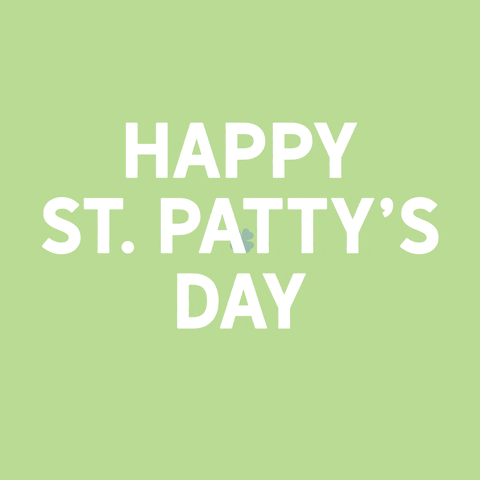
#st patricks day#saint patricks day#saint patrick#st patrick#st pattys day#saint patty's day#st patty#saint patty#green holiday#irish holiday#irish#irish history#four leaf clover#4 leaf clover
5 notes
·
View notes
Text

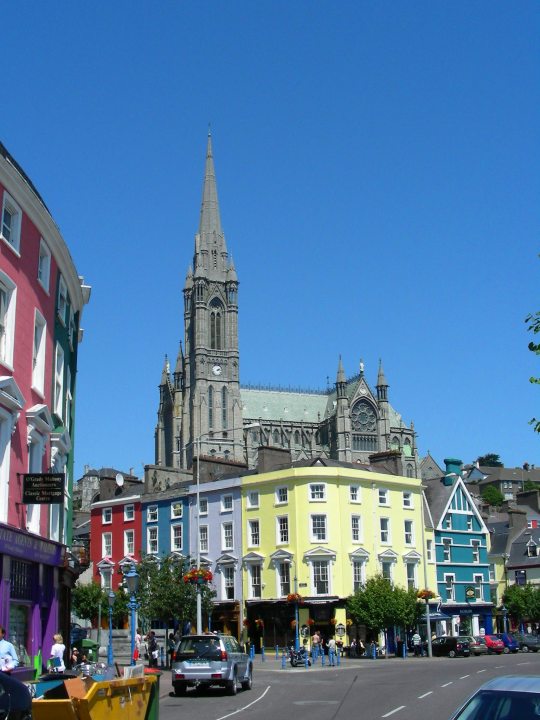

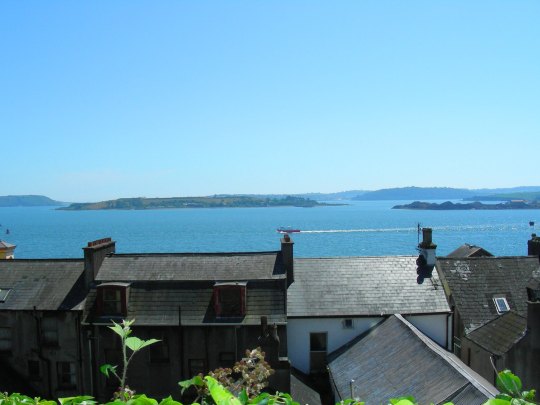
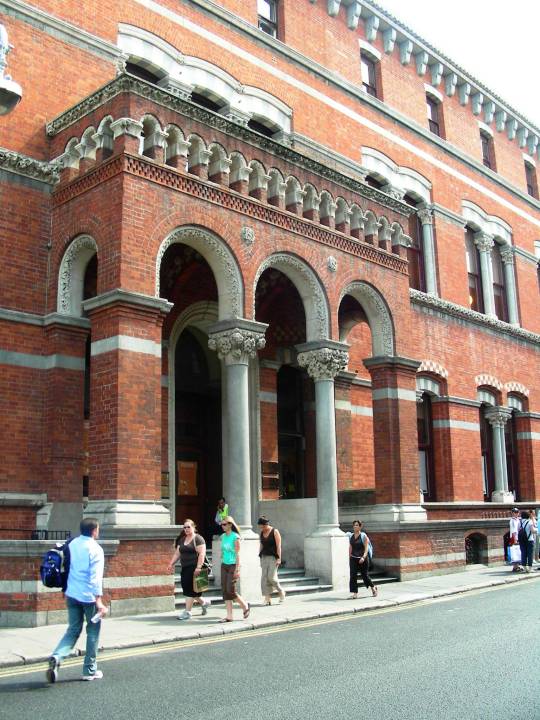


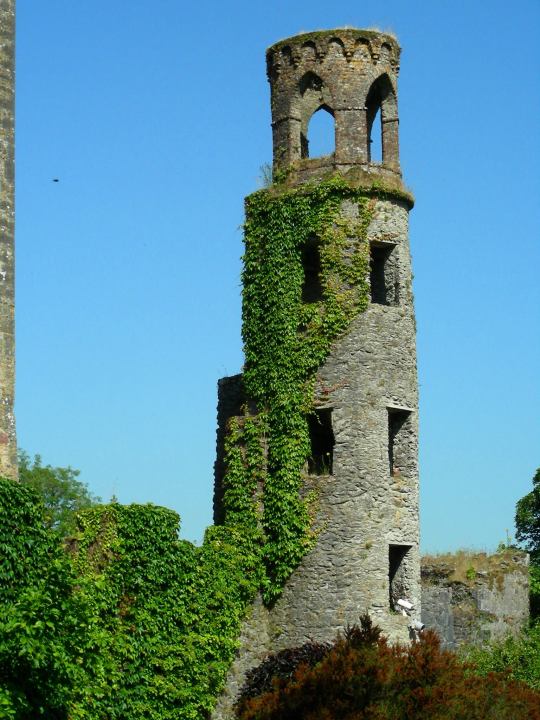
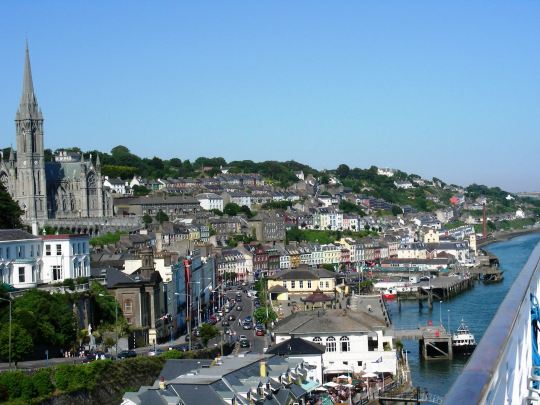
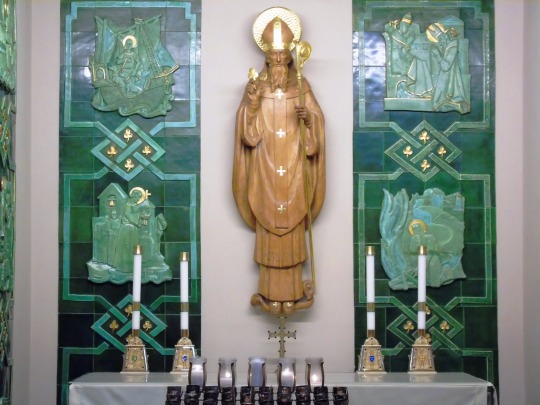
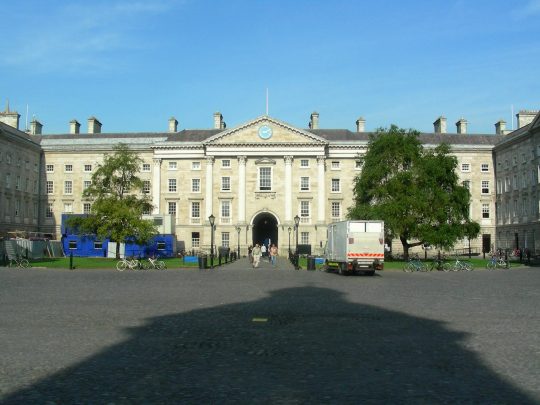

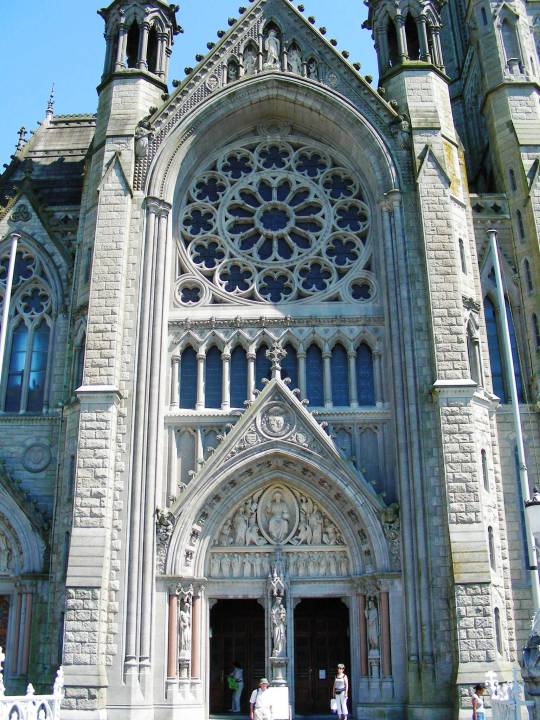



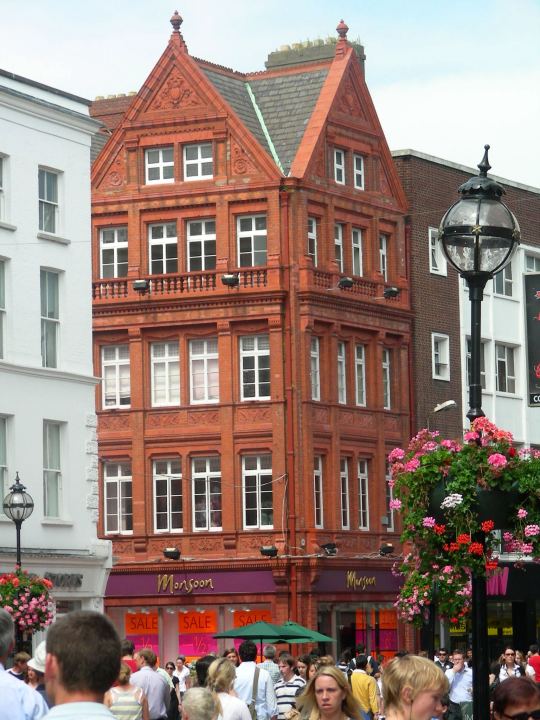

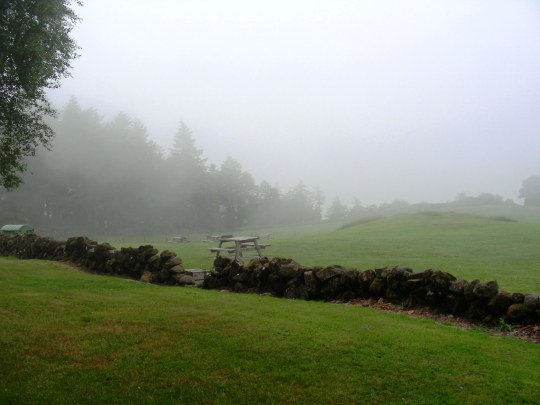
Saint Patrick’s Day
Saint Patrick’s Day is an annual feast celebrated on March 17th. Get ready to don yourself with the greenest garb, eat some clover-shaped cookies and march in Irish pride parades. St Patrick was the patron saint and bishop of Ireland. He was also the national apostle of Ireland who is credited with bringing the Christianity to Ireland. St Patrick’s Day is a religious feast day in the 17th-century which has evolved into a variety of festivals from across the globe. The celebration includes Irish culture with parades, special foods, music, dancing, and a whole lot of traditional green feast of the meal of Irish bacon and cabbage. St Patrick’s Day is also celebrated inside and outside of Ireland as a cultural and religious holiday. Saint Patrick’s Day is a global celebration of Irish culture and honors St Patrick, one of Ireland’s patron saints.
“Christ beside me, Christ before me, Christ behind me, Christ within me, Christ beneath me, Christ above me.” – Saint Patrick
History of Saint Patrick’s Day
The origin, history, and the first observance of Saint Patrick’s Day are as old as St Patrick. Therefore the exact person or organization who has come up celebrating the St Patrick is anonymous. However, the history and tradition of St Patrick’s Day celebration are rich and long. March 17th is chosen for the feast as it is the traditional death date of Saint Patrick in or around the year 493. St Patrick’s Day is otherwise called as or the Feast of Saint Patrick or Lá Fhéile Pádraig in Irish, meaning the Day of the Festival of Patrick. It is a cultural and religious celebration, and the Irish have observed this day as a religious holiday for beyond 1,000 years. St Patrick’s Day was made as an official Christian feast day during the early 17th century and is observed by the Catholic Church, the Anglican Communion, the Eastern Orthodox Church, and the Lutheran Church.
St Patrick’s Day commemorates Saint Patrick and the arrival of the Christianity in Ireland. The annual commemoration, in general, celebrates the rich heritage and culture of the Irish. People in Ireland have been celebrating the Roman Catholic feast day of St Patrick on March 17 around the ninth or tenth century. The first parade was held to honor St Patrick’s Day took place in the United States and not in Ireland. The celebration Day falls during the Christian season of Lent, and the Irish families would traditionally attend the church in the morning and celebrate it in the afternoon. People will drink, dance and feast on the traditional meal of Irish bacon and cabbage as the Lenten prohibitions against the consumption of meat were abandoned on the celebration.
Saint Patrick’s Day is still a public holiday in many countries including the Republic of Ireland and has also been celebrated in more countries than any other national festival. Until the late 20th century, the St Patrick’s Day was often a bigger celebration among the diaspora than it was in Ireland. Celebrations usually involve the public parades and festivals, Irish traditional music sessions, and the wearing of the green attire or shamrocks. The Irish brands of drinks are popular at the St Patrick’s Day events. The shamrock is considered to be the most common St Patrick’s Day symbol. The shamrock is traditionally the leaf of the clover plant that is referred to as a symbol of the Holy Trinity. People prefer to wear the color green and the St Patrick’s Day parades will hold the flag of the Republic of Ireland around the world.
The custom of ‘drowning the shamrock‘ or ‘wetting the shamrock‘ on the St Patrick’s Day was historically popular, especially in Ireland. A shamrock is then put into the bottom of a cup at the end of the celebrations and then the cup is filled with the alcohol like whiskey, beer, or cider. The alcohol is then drunk as a toast to St Patrick, Ireland, or those present. The shamrock will either be swallowed with the drink or taken out and tossed over the shoulder for the good luck. It was said that St Patrick had rid Ireland of snakes. However, there have been no snakes in Ireland. Saint Patrick was a 5th-century Romano-British Christian missionary and is considered to be the foremost patron saint of Ireland. He was an “Apostle of Ireland” and bishop in Ireland. Patrick was thought to be born in Roman Britain and was kidnapped and taken to Ireland as a slave when he was 16.
Records say that St Patrick was actually born as Maewyn Succat, but later he had changed his name to Patricius or Patrick that derives from the Latin term for “father figure,” after he has become a priest. He had later escaped but returned to Ireland. Patrick was also credited with bringing the Christianity to the people of Ireland. Patrick had already come to be worshipped as the patron saint of Ireland by the seventh century. The precise dates of Patrick’s life are uncertain as there are many conflicting traditions prevailing regarding the year of his death. It is said to have died on March 17 in or around the year 493. It is said that he had been buried under the Down Cathedral in Downpatrick, Ireland. Thus the St Patrick’s Day celebration is held on the same date throughout the world.
How to Celebrate Saint Patrick’s Day
Celebrating the Saint Patrick’s Day is quite easy. You can wear any green clothing on this celebration Day. Visit a church and attend a St Patrick’s Day parade. Serve your children with sweets and adults can enjoy drinking a ‘pint’ of beer at a local pub. You can organize parties at your home featuring the homemade Irish food and drinks that are dyed in green food colour are part of this celebration. Include the meal of Irish bacon and cabbage to treat your friends and family. If you are affordable, take a visit to Ireland to indulge yourself in the traditional celebrations. You can even go to any restaurants and pubs which offer Irish food or drink to celebrate this Day.
Source
#Saint Patrick’s Day#StPatricksDay#SaintPatricksDay#17 March 493#travel#anniversary#Irish holiday#original photography#Ireland#Cork#Cobh#Cathedral Church of St Colman#architecture#cityscape#ruins#flora#landscape#countryside#seascape#Irish Sea#tourist attraction#landmark#summer 2006#Muir Cheilteach#Blarney Castle#River Liffey#Dublin#Trinity College#St. Patrick's Cathedral#Cathedral Basilica of St. Augustine
6 notes
·
View notes
Text

Erin Go Bragh Irish phrase Ireland Forever T-Shirt
https://www.teepublic.com/t-shirt/57793333-erin-go-bragh-irish-phrase-ireland-forever?store_id=2123844
March 17th is the feast day of the patron saint of Ireland, St. Patrick. In the United States, it is also the day of shamrocks, leprechauns, and green beer (and green everything else). Blue was once the color traditionally associated with St. Patrick, but the color green has several links to Ireland, including its use on Ireland’s flag in the form of a stripe, its symbolism of Irish nationalism and the country’s religious history, and its connection to Ireland’s nickname, The Emerald Isle. On St. Patrick’s Day, people turn to their dictionary to look up Erin go bragh, which means “Ireland forever.” The original Irish phrase was Erin go brách (or go bráth), which translates literally as “Ireland till doomsday.” It’s an expression of loyalty and devotion that first appeared in English during the late 18th-century Irish rebellion against the British.

#Irish#irish american#irish pride#irish history#irish holiday#ireland#st patricks day#st. patricks day#erin go bragh#ireland forever#ireland flag#irish flag#st.patrick's day#eire#lucky#shamrock#dublin
2 notes
·
View notes
Text
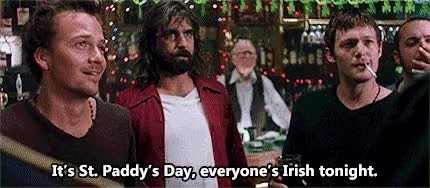
Happy Paddy's Day Everyone! 🇮🇪 💚
#st patricks day#paddy's day#st paddys day#saint paddys#Patrick's day 2023#ireland#irish holiday#irish celebration#irish culture#Matthew.chat
8 notes
·
View notes
Photo
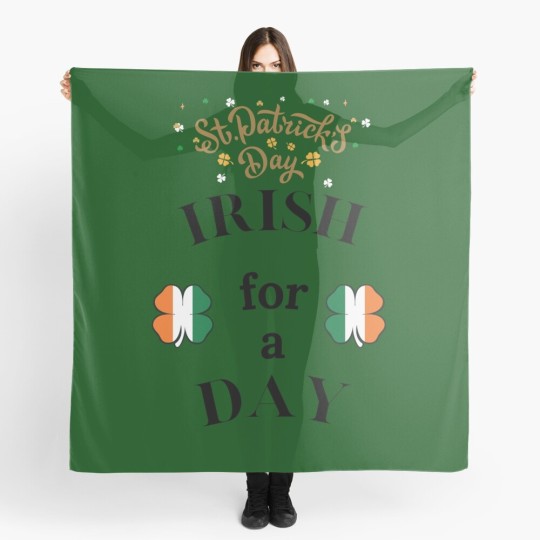
Get ready to celebrate St. Patrick’s Day in style with our new St. Patrick's Day themed Design ! Featuring the fun slogan ‘Irish for a day,’ this design is perfect for showing off your Irish pride. Made with high-quality materials, it’s comfortable, lightweight, and perfect for any St. Patrick’s Day celebration. Order now and get ready to party like the Irish! 🍀🎉 #StPatricksDay Irish For a Day-St. Patricks Designs Scarf by KMRmerchDesigns)
#findyourthing#redbubble#patricks day#patricks day parade#irish america#irish#ireland#patricks day costume#irish festival#irish holiday#irish culture#irish heritage
3 notes
·
View notes
Text
Happy st Patrick's day!

#my art#myart#digitial art#st. paddy's day#st. patrick's day#irish#irish heritage#irish history#irish holiday
2 notes
·
View notes
Photo







(via St. Patrick's Day Design Classic T-Shirt by kristalcurt)
#findyourthing#redbubble#tshirts#hoodies#sweatshirts#s3lf hate#dirty socks#hats#shamrocks#irish#ireland#irish american#celebración#irish holiday#snakes#clovers#designer bags#phone lockscreen#laptops#iPad cases#home decor#office supplies#well-stationed#notebooks#oracle cards#greeting cards#st pats day#st patricks day#st patrick's cathedral
2 notes
·
View notes
Photo
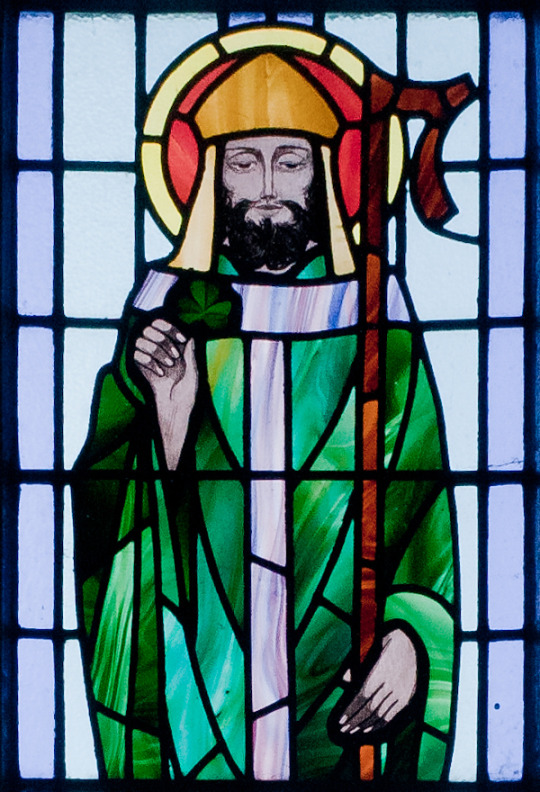


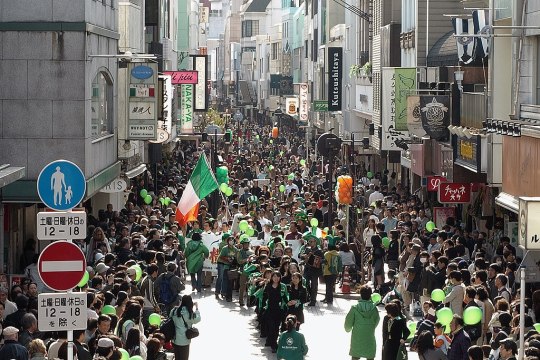


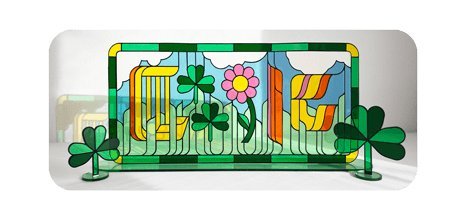
Saint Patrick's Day, or the Feast of Saint Patrick (Irish: Lá Fhéile Pádraig, lit. 'the Day of the Festival of Patrick'), is a religious and cultural holiday held on 17 March, the traditional death date of Saint Patrick (c. 385 – c. 461), the foremost patron saint of Ireland.
Saint Patrick's Day was made an official Christian feast day in the early 17th century and is observed by the Catholic Church, the Anglican Communion (especially the Church of Ireland), the Eastern Orthodox Church, and the Lutheran Church. The day commemorates Saint Patrick and the arrival of Christianity in Ireland, and, by extension, celebrates the heritage and culture of the Irish in general. Celebrations generally involve public parades and festivals, céilithe, and the wearing of green attire or shamrocks. Christians who belong to liturgical denominations also attend church services and historically the Lenten restrictions on eating and drinking alcohol were lifted for the day, which has encouraged and propagated the holiday's tradition of alcohol consumption.
Saint Patrick's Day is a public holiday in the Republic of Ireland, Northern Ireland, the Canadian province of Newfoundland and Labrador (for provincial government employees), and the British Overseas Territory of Montserrat. It is also widely celebrated in the United Kingdom, Canada, United States, Argentina, Australia, South Africa, and New Zealand, especially amongst Irish diaspora. Saint Patrick's Day is celebrated in more countries than any other national festival. Modern celebrations have been greatly influenced by those of the Irish diaspora, particularly those that developed in North America. However, there has been criticism of Saint Patrick's Day celebrations for having become too commercialised and for fostering negative stereotypes of the Irish people.
1 note
·
View note
Text
"May the wisdom of God instruct us. May the hand of God protect us. May the Word of God direct us." (St Patrick)
#st patricks day#irish blessing#irish holiday#irish history#new blessings#new beginnings#christian faith#2023 blessings#2023 beginnings
0 notes
Text

Travel poster for Dublin by Scandinavian Airlines (S.A.S.) and Aer Lingus (Irish Air Lines) featuring an illustration of Dublin Airport (c. 1950). Artwork by Raymond Teague Cowern.
#vintage travel poster#vintage poster#1950s#Raymond Teague Cowern#ireland#aer lingus#irish air lines#SAS#scandinavian airlines#eire#airport#dublin#aeroplane#airplane#travel#tourism#holiday
51 notes
·
View notes
Text

Bethlehem is the birthplace of Jesus Christ. Christmas celebration has been cancelled for Palestinian Christians this year and the infant Christ has been placed in rubble in a powerful statement.
Watch the video below, learn more.
#free gaza#free palestine#gaza strip#irish solidarity with palestine#palestine#gaza#news on gaza#al jazeera#boycott israel#israel#West Bank#west bank palestinians#Palestinian Christians#Bethlehem#Jesus Christ#Christianity#Christmas#The holiday season#Baby Jesus#Video#Share#Seriously reblog this one don't just Like it this is important because there are 3 main faiths in the region and this is the minority#In the goddamn town the religion was BORN IN.
155 notes
·
View notes
Photo



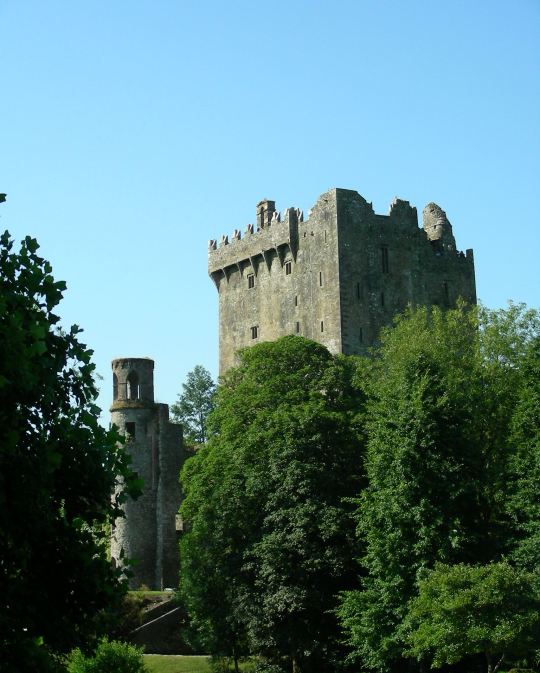






Saint Patrick’s Day
Saint Patrick’s Day is an annual feast celebrated on March 17th. Get ready to don yourself with the greenest garb, eat some clover-shaped cookies and march in Irish pride parades. St Patrick was the patron saint and bishop of Ireland. He was also the national apostle of Ireland who is credited with bringing the Christianity to Ireland. St Patrick’s Day is a religious feast day in the 17th-century which has evolved into a variety of festivals from across the globe. The celebration includes Irish culture with parades, special foods, music, dancing, and a whole lot of traditional green feast of the meal of Irish bacon and cabbage. St Patrick’s Day is also celebrated inside and outside of Ireland as a cultural and religious holiday. Saint Patrick’s Day is a global celebration of Irish culture and honors St Patrick, one of Ireland’s patron saints.
“Christ beside me, Christ before me, Christ behind me, Christ within me, Christ beneath me, Christ above me.” – Saint Patrick
History of Saint Patrick’s Day
The origin, history, and the first observance of Saint Patrick’s Day are as old as St Patrick. Therefore the exact person or organization who has come up celebrating the St Patrick is anonymous. However, the history and tradition of St Patrick’s Day celebration are rich and long. March 17th is chosen for the feast as it is the traditional death date of Saint Patrick in or around the year 493. St Patrick’s Day is otherwise called as or the Feast of Saint Patrick or Lá Fhéile Pádraig in Irish, meaning the Day of the Festival of Patrick. It is a cultural and religious celebration, and the Irish have observed this day as a religious holiday for beyond 1,000 years. St Patrick’s Day was made as an official Christian feast day during the early 17th century and is observed by the Catholic Church, the Anglican Communion, the Eastern Orthodox Church, and the Lutheran Church.
St Patrick’s Day commemorates Saint Patrick and the arrival of the Christianity in Ireland. The annual commemoration, in general, celebrates the rich heritage and culture of the Irish. People in Ireland have been celebrating the Roman Catholic feast day of St Patrick on March 17 around the ninth or tenth century. The first parade was held to honor St Patrick’s Day took place in the United States and not in Ireland. The celebration Day falls during the Christian season of Lent, and the Irish families would traditionally attend the church in the morning and celebrate it in the afternoon. People will drink, dance and feast on the traditional meal of Irish bacon and cabbage as the Lenten prohibitions against the consumption of meat were abandoned on the celebration.
Saint Patrick’s Day is still a public holiday in many countries including the Republic of Ireland and has also been celebrated in more countries than any other national festival. Until the late 20th century, the St Patrick’s Day was often a bigger celebration among the diaspora than it was in Ireland. Celebrations usually involve the public parades and festivals, Irish traditional music sessions, and the wearing of the green attire or shamrocks. The Irish brands of drinks are popular at the St Patrick’s Day events. The shamrock is considered to be the most common St Patrick’s Day symbol. The shamrock is traditionally the leaf of the clover plant that is referred to as a symbol of the Holy Trinity. People prefer to wear the color green and the St Patrick’s Day parades will hold the flag of the Republic of Ireland around the world.
The custom of ‘drowning the shamrock‘ or ‘wetting the shamrock‘ on the St Patrick’s Day was historically popular, especially in Ireland. A shamrock is then put into the bottom of a cup at the end of the celebrations and then the cup is filled with the alcohol like whiskey, beer, or cider. The alcohol is then drunk as a toast to St Patrick, Ireland, or those present. The shamrock will either be swallowed with the drink or taken out and tossed over the shoulder for the good luck. It was said that St Patrick had rid Ireland of snakes. However, there have been no snakes in Ireland. Saint Patrick was a 5th-century Romano-British Christian missionary and is considered to be the foremost patron saint of Ireland. He was an “Apostle of Ireland” and bishop in Ireland. Patrick was thought to be born in Roman Britain and was kidnapped and taken to Ireland as a slave when he was 16.
Records say that St Patrick was actually born as Maewyn Succat, but later he had changed his name to Patricius or Patrick that derives from the Latin term for “father figure,” after he has become a priest. He had later escaped but returned to Ireland. Patrick was also credited with bringing the Christianity to the people of Ireland. Patrick had already come to be worshipped as the patron saint of Ireland by the seventh century. The precise dates of Patrick’s life are uncertain as there are many conflicting traditions prevailing regarding the year of his death. It is said to have died on March 17 in or around the year 493. It is said that he had been buried under the Down Cathedral in Downpatrick, Ireland. Thus the St Patrick’s Day celebration is held on the same date throughout the world.
How to Celebrate Saint Patrick’s Day
Celebrating the Saint Patrick’s Day is quite easy. You can wear any green clothing on this celebration Day. Visit a church and attend a St Patrick’s Day parade. Serve your children with sweets and adults can enjoy drinking a ‘pint’ of beer at a local pub. You can organize parties at your home featuring the homemade Irish food and drinks that are dyed in green food colour are part of this celebration. Include the meal of Irish bacon and cabbage to treat your friends and family. If you are affordable, take a visit to Ireland to indulge yourself in the traditional celebrations. You can even go to any restaurants and pubs which offer Irish food or drink to celebrate this Day.
Source
#Saint Patrick’s Day#StPatricksDay#SaintPatricksDay#17 March 493#travel#1530th anniversary#Irish holiday#original photography#Ireland#Cork#Cobh#Cathedral Church of St Colman#architecture#cityscape#ruins#flora#landscape#countryside#seascape#Irish Sea#tourist attraction#landmark#summer 2006#Muir Cheilteach#Blarney Castle#River Liffey#Dublin#Trinity College#St. Patrick's Cathedral#Cathedral Basilica of St. Augustine
5 notes
·
View notes
Text

All About Samhain
Samhain, typically pronounced "sow-in", is an ancient Gaelic festival originating from a pagan spiritual tradition. It falls on November 1st in the northern hemisphere, but celebrations start at sunset on October 31st due to old Celtic timekeeping. It falls about halfway between the autumnal equinox and the winter solstice. The holiday also ushers in the end of the harvest season and the start of the dark months ahead, a.k.a the winter.
Samhain is marked as one of the most important fire festivals of the Celts, and is mentioned even in 9th century Irish literature. It was such an important time of year that neolithic passage tombs in Ireland aligned with the sunrise around this holiday, predating any historical text on it. Samhain was a celebration of large feasts and gatherings and was said to be a time where the portals to the otherworld were open and when spirits were close. However, the festival was not recorded in great detail until more early modern times.
At that time, it was mentioned how cattle were brought down from the summer pastures and slaughtered, special fires were lit for protection and cleansing, and offerings were made to the Fae and to the departed souls thought to visit their loved ones on this liminal holiday. Mumming and guising (wearing costumes and going door to door reciting verses in exchange for food) were recorded at this time. Divination also seemed to be a big part of celebrations at this time, usually involving nuts and apples.
In the 9th century, the western church declared November 1st All Saints Day and later November 2nd All Souls Day. It is believed that modern Halloween is influenced by all of these different holidays and their traditions since most of American Halloween was inherited from Irish and Scottish immigrants.
Samhain played a big role in Irish mythology, and many tales were passed down about this time of year and eventually written down by Christian monks in the Middle Ages. Most tales tell of large feasts, interactions with the Fae and the Otherworld, and of making offerings around this time of year within those tales.
In some Medieval texts, it is said that Samhain at Uliad lasted 3 days before and 3 days after, or a whole week. There were great gatherings where they held meetings, drank, feasted, and held contests. Bonfires were noted in many texts, often being lit by Druids and used to relight hearthfires and for sacrifices to the Gods. By the early modern era, they were most common in the Scottish Highlands, and by the 18th and 19th centuries, the fires, smoke, and ashes were said to have protective and cleansing powers. They were also used for divination and had a ritual involving laying stones around the fire, one for each person, and then left overnight to observe in the morning. It is said that if one of the stones had been mislaid, then that person would not survive the year. Other older customs suggest throwing the stones into the fire itself instead.
Divination on Samhain usually revolved around death or marriage. Apples and hazelnuts were common divination tools for these games and customs, apple bobbing being a common one even way back then. Food and drink were also used for divination, along with animals and dreams people had later that night.
Samhain was also noted to have many traditions involving the Fae and the deceased. People would take extra precautions to protect themselves against the Fae or even give offerings to appease them. It was also thought that the dead would revisit their homes, seeking hospitality in the cold, so places for them were set at the table. Thankful souls were thought to bring blessings, while a wronged person could bring revenge.
Mumming and guising were also recorded in the 16th century, where people would go door to door in costume and recite verses in exchange for food, sometimes for the feast itself. It was suggested that those who disguised themselves as Fae would be protected, but other sources talk about representing the old spirits of winter who demanded reward in exchange for good fortune. However, disguising as Fae led to many young men taking the step to play tricks and pranks on people as well, leading to Samhain being nicknamed "Mischief Night" as far back as the 1700s.
Modern pagans today seem to celebrate Samhain in many different ways, incorporating ancient traditions from a few of the overlapping festivals and ways unique to their own practice. Overall, it's a wonderful and fun time filled with feasting, fires, dressing up, and honoring the dead. Samhain has survived many generations despite the time passed and traditions varying throughout the years.
Samhain Associations:
Colors - orange, red, yellow, black, purple
Food - apples, pomegranates, nuts, squash, alcohol, ciders, breads, sweets
Animals - cattle and other farm animals, nocturnal animals
Items - carved vegetables, treats, protective totems, disguises
Crystals - obsidian, carnelian, bloodstone, citrine, onyx, smokey quartz
Other - bonfires, divination, costumes, mumming, feasts, death, souls, Fae
Ways To Celebrate:
carve a vegetable to represent a spirit (carve a pumpkin)
go mumming and guising (trick-or-treating)
have a bonfire
have a feast
enjoy some cider or mead
dress up in a costume
practice divination
play games like apple bobbing
honor your ancestors
leave offerings to the spirits
prepare your home for the upcoming winter
cleanse and protect your home
make a simmer pot
create an altar
gather with friends and family
give treats to others
#samhain#halloween#wheel of the year#witch#witchy#november 1st#wicca#wiccan#mythology#irish mythology#pagan#pagan holiday#irish#celtic#gaelic#divination#trick or treat#disguise#costume#treats#magick#magic#spiritual#spiritualism#spirituality#paganism#eclectic#sacred#witchblr#witchcore
32 notes
·
View notes
Text

Irish you a lucky day!
"Irish you a lucky day!" - a charming sentiment that encapsulates the spirit of St. Patrick's Day, a time when the world turns green to celebrate all things Irish. This whimsical phrase, reminiscent of the Emerald Isle's legendary luck, is the perfect way to spread joy and good fortune on March 17th. Embrace the enchantment of St. Patrick's Day as you share this heartfelt wish with friends, family, and strangers alike. Whether you're donning your finest green attire or raising a glass of Guinness in celebration, let the spirit of Ireland fill your day with warmth and cheer.
https://www.teepublic.com/t-shirt/57763941-irish-you-a-lucky-day?store_id=2123844

#irish#ireland#irish pride#st patricks day#irish american#irish holiday#irish history#holiday gifts#holiday#green#clover#shamrock
0 notes